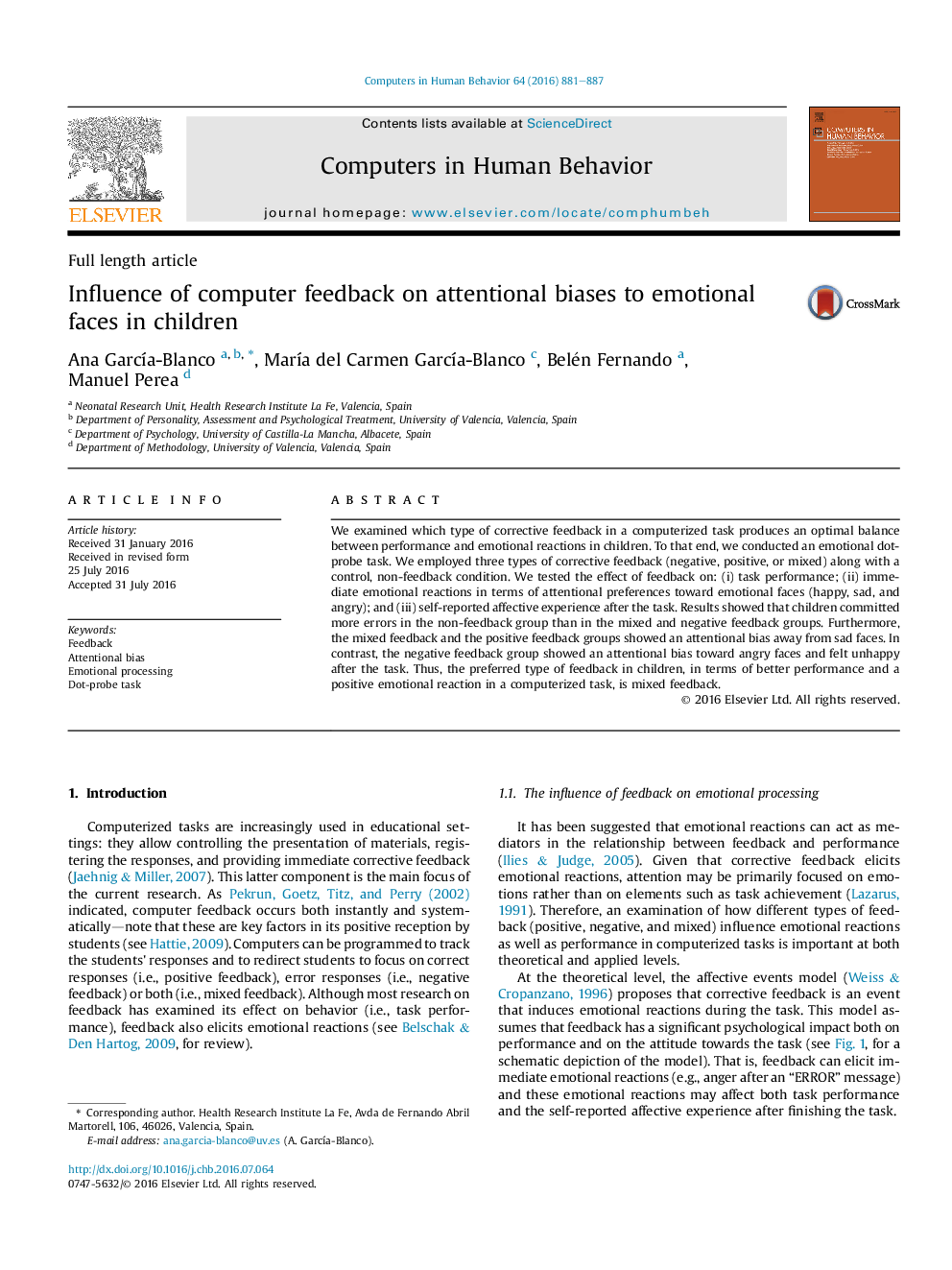| Article ID | Journal | Published Year | Pages | File Type |
|---|---|---|---|---|
| 6836719 | Computers in Human Behavior | 2016 | 7 Pages |
Abstract
We examined which type of corrective feedback in a computerized task produces an optimal balance between performance and emotional reactions in children. To that end, we conducted an emotional dot-probe task. We employed three types of corrective feedback (negative, positive, or mixed) along with a control, non-feedback condition. We tested the effect of feedback on: (i) task performance; (ii) immediate emotional reactions in terms of attentional preferences toward emotional faces (happy, sad, and angry); and (iii) self-reported affective experience after the task. Results showed that children committed more errors in the non-feedback group than in the mixed and negative feedback groups. Furthermore, the mixed feedback and the positive feedback groups showed an attentional bias away from sad faces. In contrast, the negative feedback group showed an attentional bias toward angry faces and felt unhappy after the task. Thus, the preferred type of feedback in children, in terms of better performance and a positive emotional reaction in a computerized task, is mixed feedback.
Related Topics
Physical Sciences and Engineering
Computer Science
Computer Science Applications
Authors
Ana GarcÃa-Blanco, MarÃa del Carmen GarcÃa-Blanco, Belén Fernando, Manuel Perea,
